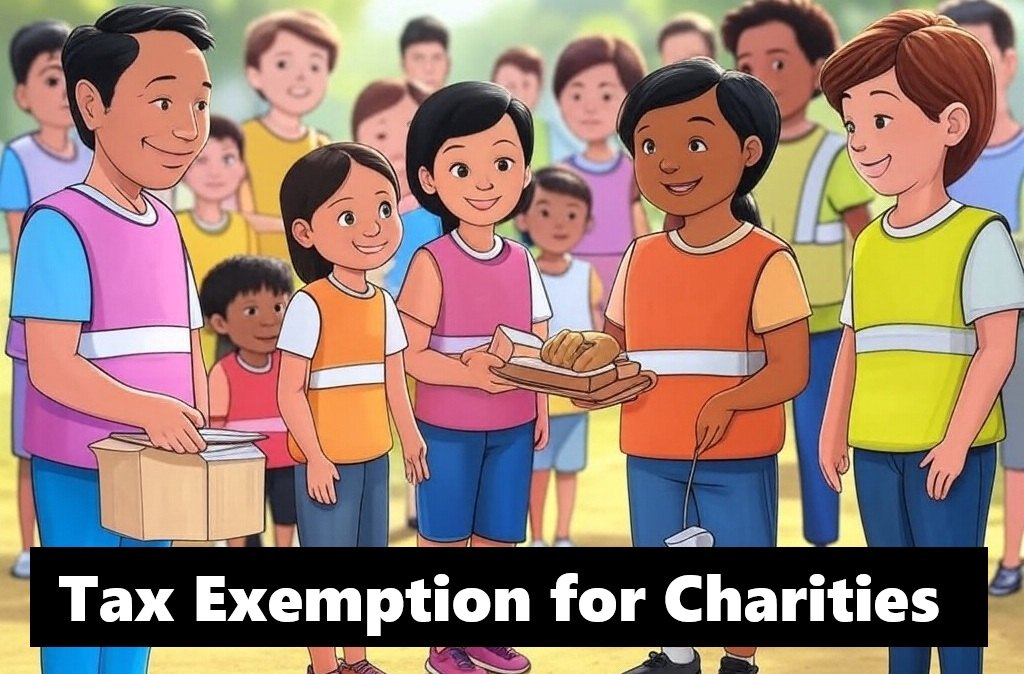Under the amended section 2(15) of the Income-tax Act, 1961 (“the Act”), charitable institutions with the purpose of ‘advancement of any other object of general public utility’ are permitted to have limited business activity only.
While “profit motive” is relevant, factors like dominant object of the organisation, consistency, and regularity of transactions have been historically examined to infer whether the activity is “business” or not.
However, the Hon’ble Supreme Court recently held that “ploughing” back of business income to “feed” charity is irrelevant under amended provisions and would be considered as business even if the dominant object is a charity.
It needs to be seen how courts choose between past and present judicial principles; and protect/prejudice genuine charitable organisations.
Tax Exemption for Charities
To understand the concept better, let us take an example, say ABC Association which is a trade association registered under section 8 of the Companies Act, 2013 and section 12AB of the Income-tax Act, 1961 (“the Act”).
ABC conducts activities for the promotion of the interest of its members, such as advocacy of industry concerns to regulatory authorities, organizing networking conferences bi-annually, maintaining industrial data, publishing journals with topical subjects.
In turn, it collects membership and journal subscription fees. While organizing the conference, the association collects payment from its members and other industrial stakeholders for participation, stall charges, sponsorship, and advertisement, sometimes resulting in a significant surplus which is, in turn, used to promote the Association’s main objectives.
Legal Framework
On a coherent reading of section 2(15) with sections 10, 11, and 13(8) of the Act, it transpires that the eligibility of exemption of the Association depends on whether its activities during the year were for “charitable purposes” squarely covered by the above definition.
Hence, it is imperative to analyse the legal framework governing the concept of “charitable purpose” for income tax purposes.
Section 2(15) reads as follows:
“charitable purpose” includes relief of the poor, education, yoga, medical relief, preservation of environment (including watersheds, forests and wildlife) and preservation of monuments or places or objects of artistic or historic interest, and the advancement of any other object of general public utility:
Provided that the advancement of any other object of general public utility shall not be a charitable purpose, if it involves the carrying on of any activity in the nature of trade, commerce or business, or any activity of rendering any service in relation to any trade, commerce or business, for a cess or fee or any other consideration, irrespective of the nature of use or application, or retention, of the income from such activity, unless—
(i) such activity is undertaken in the course of actual carrying out of such advancement of any other object of general public utility; and
(ii) the aggregate receipts from such activity or activities during the previous year, do not exceed twenty per cent of the total receipts, of the trust or institution undertaking such activity or activities, of that previous year;”
On a careful reading of section 2(15), it is clear that organizations carrying out the first six categories of charitable activities can have incidental business activities without any financial limit.
However, the seventh category for ‘advancement of any other object of GPU’ can have business activity only up to 20% of gross receipts; that too while advancing the primary objective.
This limit was imposed by an amendment through the Finance Act 2012 as Rs. 25 lakhs, changed later by the Finance Act 2015 to 20% of the gross receipts.
If the seventh category of activity is any business activity (even if incidental) in excess of such threshold, then their charitable status will not be lost as per judicial precedence, but they will be treated as ‘non-exempt entity’ for that particular assessment year under section 13(8) of the Act.
Issue at Hand
In light of the above background, the concern is whether the income received during the conference constitutes an activity in the nature of trade, commerce, or business, or in relation thereto for the purpose of section 2(15)?
Legislative Intent of the Amendment to Section 2(15)
To interpret the provisions of the amended section constructively, it is imperative to understand the intent behind the amendment.
The explanatory Circular No. 11 of 2008 issued in the context of proviso to section 2(15) provides that this provision is enacted to weed out masked entities or for-profit organizations working in the garb of charitable institutions. The Hon’ble Finance Minister’s Budget Speech of 2008 states as follows:
“…some entities carrying on regular trade, commerce or business or providing services in relation to any trade, commerce or business and earning incomes have sought to claim that their purposes would also fall under “charitable purpose”. Obviously, this was not the intention of Parliament and, hence, I propose to amend the law to exclude the aforesaid cases. Genuine charitable organisations will not in any way be affected.”
Further, the Hon’ble Finance Minister replied to the Debate in the Lok Sabha on the Finance Bill 2008 as follows:
“The CBDT will, following the usual practice, issue an explanatory circular containing guidelines for determining whether an entity is carrying on any activity in the nature of trade, commerce or business or any activity of rendering any service in relation to any trade, commerce or business.
Whether the purpose is a charitable purpose will depend on the totality of the facts of the case. Ordinarily, Chambers of Commerce and similar organisations rendering services to their members would not be affected by the amendment and their activities would continue to be regarded as “advancement of any other object of general public utility.”
From the above, it is clearly discernible that the intention of the Parliament was to identify and restrict the business activity undertaken by masked commercial organizations while advancing the primary objectives.
Possible Contentions
Charitable does not mean “no profit/surplus” | Profit vs. profit motive
There are judicial pronouncements that the principal or dominant activity of a tax-exempt charitable institution can also be undertaken on commercial lines, though without profit intent and to such extent, it shall still be called “charitable” and “not commercial.”
The Hon’ble Supreme Court judgement in the case of T.M.A. Pai Foundation vs. State of Karnataka (2002) and in P.A. Inamdar vs. State of Maharashtra (2005) laid down the principles of understanding charitable activity.
The SC clarified that the term “charitable” does not mean an organization cannot earn a profit from its primary charitable activity. In Islamic Academy of Education vs. State of Karnataka (2003), it was held that an educational institution may have a reasonable surplus of 6% to 15% annually without affecting its charitable character.
If income from the conference constitutes more than 20% of gross receipts, the moot question is whether the activities in relation thereto are “in the nature of trade, commerce or business.” This is a factual question to be decided based on the nature, scope, extent, and frequency of the activity.
Whether Organizing the Conference Is “Trade, Commerce or Business”?
To evaluate this, the definitions of “trade,” “commerce,” and “business” must be considered:
- “Trade” (Webster’s): A means of earning a living, occupation, or work.
(Black’s Law): A business learned or carried out for subsistence or profit.
State of Punjab v. Bajaj Electricals Ltd.: Ancillary activities (like accepting orders in Punjab) did not constitute trade.
Khoday Distilleries Ltd. v. State of Karnataka: Trade includes profit-driven manual or mercantile business. - “Commerce” (Concise Oxford): Exchange of merchandise, especially on a large scale. In common understanding, it implies large-scale trade.
- “Business” (Section 2(13) of the Act): Includes trade, commerce, or manufacture.
(Black’s Law Dictionary): Employment, occupation, profession, or commercial activity for gain or livelihood.
According to Sampath Iyengar’s commentary, business activities have these features:
- Continuous and systematic.
- Capable of producing profit.
- Involve transaction between two or more persons.
- Include an element of reciprocity.
Economic Activity vs. Profit Motive
While profit motive is a relevant consideration, economic activity has gained more significance, especially under indirect tax laws where tax arises from economic transactions, not necessarily profits.
Town Investments Ltd. v. Department of the Environment: Even government rent collection activities could be business.
ICAEW v. Customs and Excise Commissioners (1999): Regulatory licensing by a statutory body was not economic activity.
It is important to assess whether revenue collection is for commercial purposes or as a statutory function.
Incidental or Ancillary Activities and Their Relation to Dominant Activities
In CST v. Sai Publication Fund (2002), SC held that incidental publishing for spreading a message is not “business.” The object of the activity is critical. Examples like Aligarh Muslim University’s dining services were held to be minor parts of the whole, hence not trading.
In ICAI vs. DGIT (Exemptions) (2011): Activity is “business” only if it shows a profit motive and is conducted systematically. ICAI’s courses were not equivalent to private coaching.
In ICAI vs. DGIT (Exemptions) (2013): If the dominant activity is not business, then incidental activity also doesn’t qualify as business.
In ICAI Accounting Research Foundation v. DGIT (Exemptions) (2009): Revenue earned for charitable research is not commercial if the overall intent is charitable.
Impact of Recent Supreme Court Judgment: Ahmedabad Urban Development Authority (2022)
The SC recently ruled against charitable status where activities were deemed commercial in nature, even if aligned with charity. It ruled that the dominant objective test from Surat Art Silk Manufacturers Association (1980) is no longer valid post the 2008 amendment.
It emphasized that business income, even if used for charity, disqualifies the institution if it crosses thresholds or involves services like trade shows, rentals, consulting, etc. These fall under “in relation to” business and must comply with limits.
Conclusion
It may not be fair to generalize the outcome of the SC decision in the Ahmedabad case. Facts, dominant purpose, regularity, and object must be examined in each case to determine whether an activity is “business” or not. Nonetheless, recent rulings indicate a higher risk of litigation.
Food for Thought: Constitutional Validity of the Amendment to Section 2(15)
One may question the constitutional validity of the amendment. In Shri Ram Krishna Dalmia vs. Justice S.R. Tendolkar (1958), the SC stated that discrimination without intelligible differentia may be unconstitutional.
The amendment arguably allows entities under the first six limbs of section 2(15) to engage in business without financial limits, while restricting only the seventh limb, i.e., “general public utility.” This selective prejudice could be challenged under Article 14 for being discriminatory.
The CBDT may need to clarify how this legislative policy should be interpreted in light of the Ahmedabad SC ruling, especially since that judgment might not fully align with Parliament’s intent during the 2008 amendment.


